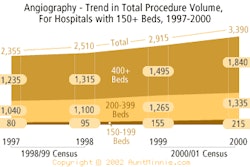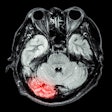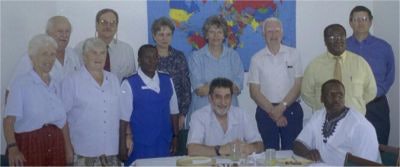
By John Vanden Brink
In early January, fellow Rotarian Jim Schaefer and I traveled to Bulawayo, Zimbabwe. Our task was to evaluate the feasibility of establishing a Rotary-sponsored WHIS-RAD (World Health Imaging System for Radiology) pilot site at Mater Dei Hospital. We found a country in desperate need of radiology services, a hospital filled with antiquated equipment, and a medical staff that was overworked and underpaid.
The WHIS-RAD system
The WHIS-RAD project began in 1975, when the Pan American Health Organization (PAHO) met to discuss the development of a primary-care radiological system optimized for use in developing countries. Because two-thirds of the world’s population does not have access to basic x-ray services, the objective was to develop and deliver a low-cost, safe, reliable, and easy-to-use x-ray system that would produce high-quality images.
The result was a new battery-operated "point-and-shoot" x-ray unit with stepped mAs and kVp, and a fixed source-to-film distance. The device underwent extensive clinical testing by the World Health Organization’s (WHO) Collaborating Center for General and Continuing Education under the direction of Dr. Holger Pettersson at Lund University Hospital in Lund, Sweden. (Dr. Thure Holm from the same institution oversaw the initial development and testing of the unit.)
Dr. Harald Ostensen, coordinator of diagnostic imaging and laboratory technology for WHO in Geneva, Switzerland, is overseeing the program. Dr. Gerald Hansson, who provided initial support for the program, preceded Ostensen.
Each x-ray unit is accompanied by an outstanding set of manuals that describe how to perform procedures, interpret results, and process films. Dr. Philip E. S. Palmer, professor emeritus of radiology at the University of California, Davis, wrote them. Palmer is also a WHO consultant and a major advocate of the WHIS-RAD concept. He spent years in Africa, beginning in 1954 as an assistant radiologist in Bulawayo. At the 2000 RSNA meeting, he received a special presidential award for his enormous contributions to the international radiologic community.
Today, two companies provide the WHIS-RAD unit to the specifications approved by WHO: Philips Medical Systems of Best, Netherlands, with its MRS system; and IMS of Bologna, Italy, with its Wizard system. Each unit costs about $40,000, including installation and training.
Since 1975, however, only 1,200 WHIS-RAD units have been installed; fewer than half of them are in operation today. WHO says the purchasing has been slowed by obstacles such as capital cost; lack of revenues to fund maintenance, training, film, and chemicals; government and medical politics and corruption. Approximately 80,000 units are needed worldwide.
Although the situation appears daunting, assistance from Western charity and aid organizations could help bridge the gap between the radiology needs of developing countries and their financial resources.
Rotary International
Rotary International, a global organization dedicated to humanitarian service, can do much to help. The group has 29,000 clubs and about 1.2 million members around the world.
Rotary is working closely with WHO to eradicate polio, has provided countless volunteer hours to conduct the immunizations, and has given close to $500 million in direct support of polio eradication over the last 15 years. The Rotary Foundation provides matching-fund support to local club projects, and has a successful record of partnering with other philanthropic organizations and individuals.
Rotary’s Park Ridge, IL, chapter, has taken on the challenge of establishing successful WHIS-RAD pilot sites. The idea is quite simple: A donor Rotary club provides funding while a recipient club provides site selection and oversight. By supplying a WHIS-RAD unit that meets WHO standards, Rotary clubs can be assured that they are offering the right solution for the greatest need.
For qualified programs, matching-fund grants are available from the Rotary International Foundation. Park Ridge Rotary recently received a grant for nearly $21,000 from the Foundation. The rest of the funds are being provided through contributions.
Zimbabwe
Zimbabwe is a country of 11 million people that is politically and economically challenged. Inflation stands at 109% a year, and unemployment is projected to reach 70% in 2002, according to economists quoted in the Zimbabwe Independent.
 |
| A street scene in Bulawayo, Zimbabwe. |
The official exchange rate is $55 Zimbabwe to $1 U.S., but the street rate is 300:1. People who convert money at the government rate automatically lose 85% percent of their purchasing power. Finally, the Zimbabwe economy contracted by 8% in 2001, and is expected to shrink another 5% this year.
As in the rest of Africa, the AIDS epidemic is a major crisis in Zimbabwe. Some 25% of the adult population is infected, while 85% of pregnant women are HIV-positive along with their children. Tuberculosis is also increasingly common, some cases of which are AIDS-related.
A leading cause of hospital admissions is trauma from traffic accidents. Most people can’t afford public transportation or bicycles and have to walk everywhere, including on the main highways, putting them at risk of traffic accidents.
Mater Dei Hospital
The 180-bed private Mater Dei Hospital was founded in Bulawayo 50 years ago by a Franciscan order of nuns from the U.K., according to Maureen Jamieson, the administrator of Mater Dei and a fellow Rotarian. An emergency care addition, funded by private donations from the U.S., opened last year. A new x-ray room, darkroom, and viewing room are wired and ready, but remain empty.
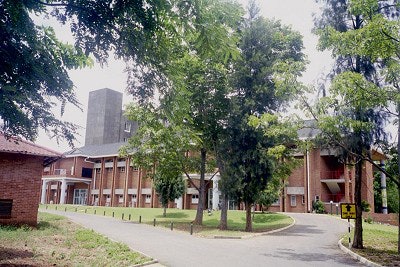 |
| Mater Dei Hospital. |
Jamieson said that between 600-700 x-ray procedures need to be performed each month. The hospital’s present equipment includes an 18-year-old Philips portable x-ray unit used for general purposes. A 1997 Philips MD4000 mammography unit and a 1996 Toshiba Tosbee general-purpose ultrasound unit are also used.
 |
| The hospital's non-operational x-ray unit. |
The hospital has a 27-year-old Siemens Tridoros 5 S 3688 x-ray unit, and a Siemens mammography unit of the same vintage, neither of which are operational. Film processing is done on two 27-year-old Eastman Kodak Ecomat 2400 processors, which are kept operational by exchanging parts between them.
Management challenges
Mater Dei Hospital does not have a radiologist on staff. There are a few private-practice radiologists in Bulawayo, a city of 500,000 people located 300 miles away, and Mater Dei does have several radiographers who work on a part-time basis. The hospital also shares radiographers with a handful of other locations that have x-ray services.
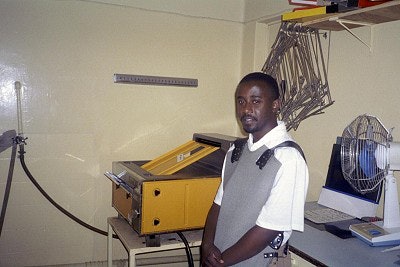 |
| A radiologic technologist at Mater Dei mans the film processor that is more than two decades old. |
The economic situation in Zimbabwe has created a brain drain. People with marketable skills such as radiography are leaving the country for other locations where they can make more money. Recent negotiations between nurses and the hospital administration resulted in a 25% pay raise with a three-month review as a compromise to the 168% raise the nurses requested in order to keep pace with inflation.
Insurance claims are paid 90-120 days after billing, but by then, the value of the payment has declined by as much as one-third. Lack of supplies and obtaining timely equipment maintenance are other challenges. One of the hospital’s staff members had to drive to Johannesburg, nearly 400 miles away on two-lane roads, to pick up a trunk load of x-ray film.
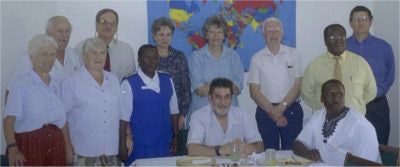 |
| The Mater Dei Hospital board of administration. |
The government negotiates contracts for equipment maintenance and repairs, but doesn’t pay the bills on time -- if at all -- so service response is minimal. At another facility, a government-funded radiation therapy and nuclear medicine center, a five-year-old Varian linear accelerator was down. A Sopha gamma camera hadn’t worked in over a year. The facility is prohibited from directly paying for repairs.
Next steps
Thanks to our trip, we know that providing an x-ray unit to Mater Dei will be a great contribution to the community and the hospital. We know that the hospital’s physicians and staff will manage this resource well, although certainly not within the orthodoxy of U.S. radiology.
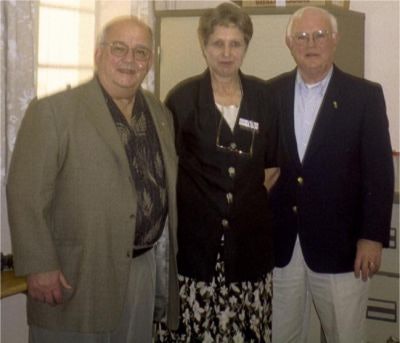 |
| From left, author John Vanden Brink, Maureen Jamieson, Mater Dei administrator, and Rotarian Jim Schaefer. Images courtesy of John Vanden Brink. |
The biggest question is the political situation. Mater Dei administrator Jamieson recommended that we postpone placing an order for the WHIS-RAD equipment until after last month’s elections. We recently received word that the situation was calm, there was a return to normalcy, and that we should initiate the order. We are now in the process of purchasing a Philips MRS unit for installation at Mater Dei hospital as a Rotary pilot site.
The second phase of our program is to motivate other Rotary clubs and those outside Rotary to become involved with placing WHIS-RAD installations in places of need. If you have an interest in working on establishing WHIS-RAD sites for underserved locations through Rotary partnerships or other mission programs, please contact me at [email protected].
By John Vanden BrinkAuntMinnie.com contributing writer
April 2, 2002
John Vanden Brink, now retired, worked in marketing and business development primarily in the diagnostic imaging markets. He founded and led Technology Marketing Group until its sale to International Marketing Ventures in 1999.
Copyright © 2002 AuntMinnie.com





